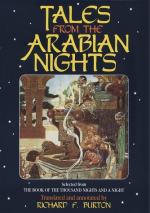Coming back to Europe we find the primitive form of the story partly preserved in a Greek popular version given in Hahn’s collection: Three young men are in love with the same girl, and agree to go away and meet again at a given time, when he who shall have learned the best craft shall marry the girl. They meet after three years’ absence. One has become a famous astronomer; the second is so skilful a physician that he can raise the dead, and the third can run faster than the wind. The astronomer looks at the girl’s star and knows from its trembling that she is on the point of death. The physician prepares a medicine which the third runs off with at the top of his speed, and pours it down the girl’s throat just in time to save her life—though, for the matter of that, she might as well have died, since the second suitor was able to resuscitate the dead!
But the German tale of the Four Clever Brothers, divested of the preliminary incidents which have been brought into it from different folk-tales, more nearly approaches the form of the original, as we may term the Sanskrit story for convenience’ sake: A poor man sends his four sons into the world, each to learn some craft by which he might gain his own livelihood. After travelling together for some time they came to a place where four roads branched off and there they separated, each going along one of the roads, having agreed to meet at the same spot that day four years. One learns to be an excellent astronomer and, on quitting, his master gives him a telescope,[FN#415] saying, “With this thou canst see whatever takes place either on earth or in heaven, and nothing can remain concealed from thee.” Another becomes a most expert thief. The third learns to be a sharpshooter and gets from his master a gun which would never fail him: whatever he aimed at he was sure to hit. And the youngest becomes a very clever tailor and is presented by his master with a needle, which could sew anything together, hard or soft. At the end of the four years they met according to




